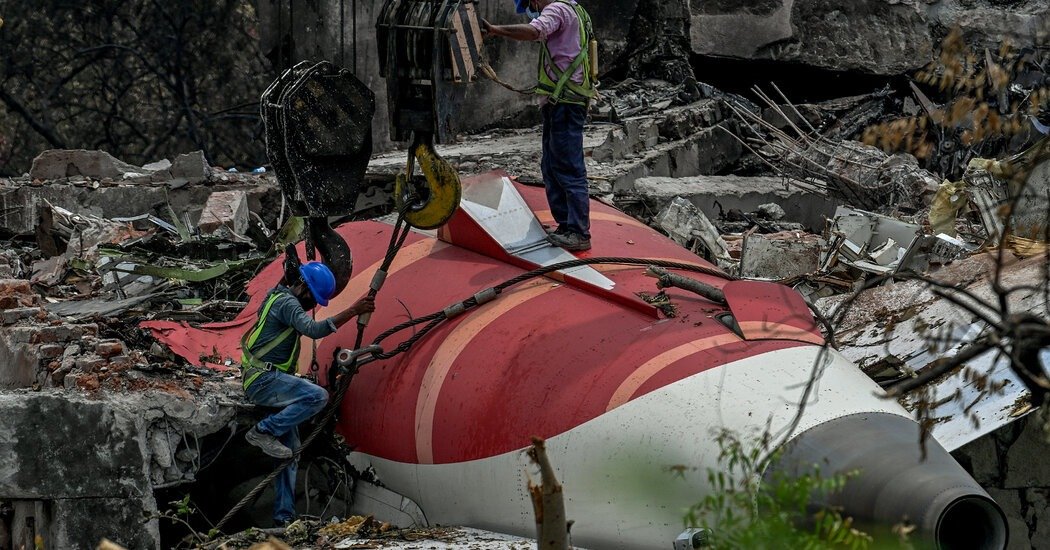CRASH-REPORT: Fuel Cutoff, Switch Failure, and Oversight Lapses Cited in Preliminary Report on Air India AI171 Crash
In just 32 seconds, Air India Flight AI171 crashed near Ahmedabad on June 12, killing 260 people. A preliminary report by India’s Aircraft Accident Investigation Bureau (AAIB) has identified a major systems failure as the cause.
Investigators say the failure was preventable — and that warnings had been issued before.
 |
| Image Source: fl360aero on X |
Both engines of the Boeing 787-8 Dreamliner lost thrust seconds after takeoff from Sardar Vallabhbhai Patel International Airport. According to the Enhanced Airborne Flight Recorder, the fuel control switches for both engines were manually moved from the “RUN” to “CUTOFF” positions within a span of one second, triggering a complete loss of engine power at 08:08:42 UTC.
This was just moments after the aircraft had reached 180 knots and achieved its rotation speed.
Cockpit voice recordings captured an immediate exchange between the two pilots. One asked, “Why did you cutoff?” and the other responded, “I didn’t”.
The engines shut down mid-air, activating the Ram Air Turbine (RAT)—a last-resort system designed to provide emergency power when both engines fail. CCTV footage from the crash site confirmed the turbine’s deployment.
The aircraft crashed just 0.9 nautical miles from the runway into the BJ Medical College hostel compound. All but one person onboard were killed.
The crash also claimed the lives of 19 people on the ground. The lone survivor is safe now.
What makes the incident more alarming is the context in which it occurred. In 2018, the U.S. Federal Aviation Administration issued a Special Airworthiness Information Bulletin (SAIB No. NM-18-33) alerting all operators of a known fault in the locking mechanism of fuel control switches manufactured by a specific supplier.
The switches, it warned, could be unintentionally moved during critical phases of flight if inspections were not conducted. The part number listed in the FAA bulletin matches the switches installed in VT-ANB, the Air India aircraft involved in the crash. However, Air India did not act on this advisory.
The airline had recorded the bulletin but deemed it “not mandatory” and failed to carry out the suggested inspections.
The investigation found no evidence of fuel contamination. Samples taken from the refueling facility at Ahmedabad and the aircraft’s tanks were tested and certified clean.
The aircraft had no hazardous cargo, was operating within weight and balance limits, and had been cleared by air traffic control for a normal takeoff. Both pilots were properly certified, medically fit, and had sufficient rest before the flight.
Flight AI171 was bound for London Gatwick with 229 passengers and 12 crew members. Its crash has prompted international concern, as multiple foreign nationals were among the victims, including passengers from the United Kingdom, Portugal, Canada, and the United States.
Representatives from Boeing, General Electric, the U.S. National Transportation Safety Board (NTSB), the FAA, and investigators from the affected countries are formally assisting the AAIB’s inquiry.
In a technical inconsistency still under investigation, the black box recorded that takeoff thrust was still engaged even though the physical thrust levers were found in idle position at the crash site. This suggests a possible disconnection or failure in the throttle control system.
Efforts were made in the cockpit to restart the engines. Engine 1 showed signs of ignition recovery, but Engine 2 failed to relight. The aircraft, with gear still down and flaps set at a normal takeoff angle of 5°, never climbed above 650 feet before crashing into a densely populated part of the city.
There was no bird strike, no adverse weather, and no air traffic conflict at the time of the crash. Sabotage is not suspected, though investigators have not yet ruled out mechanical failure related to uninspected equipment.
The government of India has ordered a full systems audit of all Boeing 787 aircraft operated by Indian carriers. Air India, now owned by the Tata Group, has not publicly responded to the findings.
With the final report still pending, global aviation authorities are watching closely.
The AAIB has promised further updates, and its final conclusions are expected to shape international maintenance and oversight procedures.
